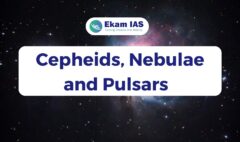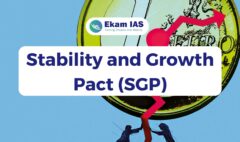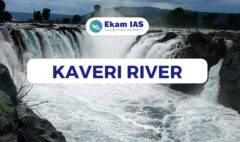Central Vigilance Commission (CVC)
November 21, 2022 2022-11-21 13:04Central Vigilance Commission (CVC)
- The Central Vigilance Commission (CVC) is the main agency for preventing corruption in the Central government.
- Suresh N. Patel sworn in as Central Vigilance Commissioner.
- It was established in 1964 by an executive resolution of the Central government.
- Its establishment was recommended by the Santhanam Committee on Prevention of Corruption (1962–64).
- Thus, originally the CVC was neither a constitutional body nor a statutory body.
- Later, in 2003, the Parliament enacted Central Vigilance Commission Act, 2003 conferring statutory status on the CVC.
COMPOSITION :
- The CVC is a multi-member body consisting of a Central Vigilance Commissioner (chairperson) and not more than two Vigilance Commissioners.
APPOINTMENT:
- They are appointed by the president by warrant under his hand and seal on the recommendation of a three-member committee consisting of the Prime Minister as its Head, the Union Minister of Home Affairs and the Leader of the Opposition in the Lok Sabha.
TERM :
- They hold office for a term of four years or until they attain the age of sixty five years, whichever is earlier.
- After their tenure, they are not eligible for further employment under the Central or a state government.
FUNCTIONS :
- The CVC receives complaints on corruption or misuse of office and to recommend appropriate action.
- Following institutions, bodies, or a person can approach to CVC:
- Central government
- Lokpal
- Whistle blowers
- A whistleblower is a person, who could be an employee of a company, or a government agency, or an outsider (like media, higher government officials, or police) disclosing information to the public or some higher authority about any wrongdoing, which could be in the form of fraud, corruption, etc.
- It is not an investigating agency.
- The CVC either gets the investigation done through the CBI or through Chief Vigilance Officers (CVO) in government offices.
- It is empowered to inquire into offences alleged to have been committed under the Prevention of Corruption Act, 1988 by certain categories of public servants.
- Its annual report gives the details of the work done by the commission and points to systemic failures which lead to corruption in government departments.
- Improvements and preventive measures are also suggested in report.
REMOVAL :
- Removal is done by the President on grounds of bankruptcy, unsound mind, infirmity of body or mind, sentenced to imprisonment for a crime, or engages in paid employment or has acquired financial or other interest that might affect his judgment.
- He can also be removed for proved misbehaviour or incapacity if the Supreme Court inquiry finds him guilty.
- They can also resign by writing to the President.
Prelims Model Question
Q. With reference to the Central Vigilance Commission, consider the following statements :
- CVC was established based on the recommendation of Santhanam Committee of (1962–64).
- Currently, the CVC is neither a constitutional body nor a statutory body.
Which of the statements given above is /are correct?
(a) 1 only
(b) 2 only
(c) Both 1 and 2
(d) Neither 1 nor 2
Answer : A
Join our Telegram Channel to solve UPSC-standard MCQs
To get years of subjectwise-segregated newspaper articles, join our subjectwise Telegram Channels.
Join our 140k+ YouTube community to watch free classes on various UPSC related topics.
Follow us on Instagram for UPSC updates.
Click here to read more UPSC Current Affairs.
Ekam IAS is the oldest online IAS institute in Kerala. We’ve years of experience in mentoring and teaching students all over the nation, helping them achieve their UPSC-dream through the right guidance, strategy, and precise content. Join Ekam IAS and turn your UPSC-dream into reality.
To learn customizable preparation strategies, book an appointment with our UPSC-expert: Book Now







